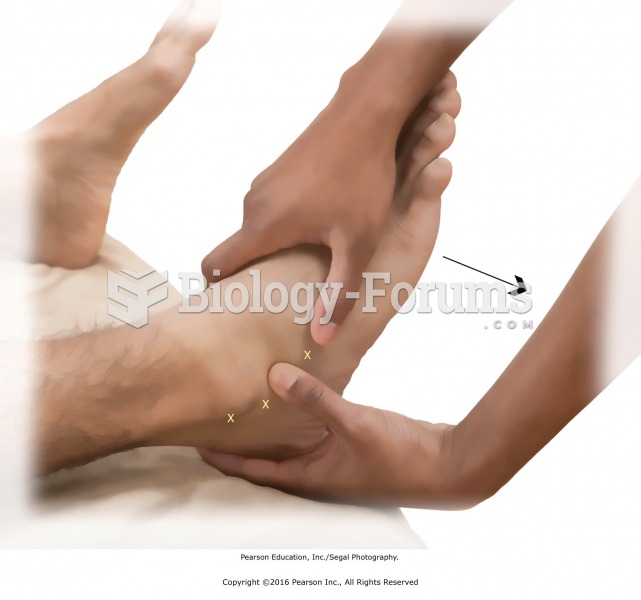|
|
|
HIV testing reach is still limited. An estimated 40% of people with HIV (more than 14 million) remain undiagnosed and do not know their infection status.
Critical care patients are twice as likely to receive the wrong medication. Of these errors, 20% are life-threatening, and 42% require additional life-sustaining treatments.
Bisphosphonates were first developed in the nineteenth century. They were first investigated for use in disorders of bone metabolism in the 1960s. They are now used clinically for the treatment of osteoporosis, Paget's disease, bone metastasis, multiple myeloma, and other conditions that feature bone fragility.
Your heart beats over 36 million times a year.
To prove that stomach ulcers were caused by bacteria and not by stress, a researcher consumed an entire laboratory beaker full of bacterial culture. After this, he did indeed develop stomach ulcers, and won the Nobel Prize for his discovery.
 If toes are curled, straighten them with effleurage along the length of each toe. Use thumb on top ...
If toes are curled, straighten them with effleurage along the length of each toe. Use thumb on top ...
 Turn head for access to posterior cervical muscles. Locate TrPs along posterior cervical muscles, ...
Turn head for access to posterior cervical muscles. Locate TrPs along posterior cervical muscles, ...





